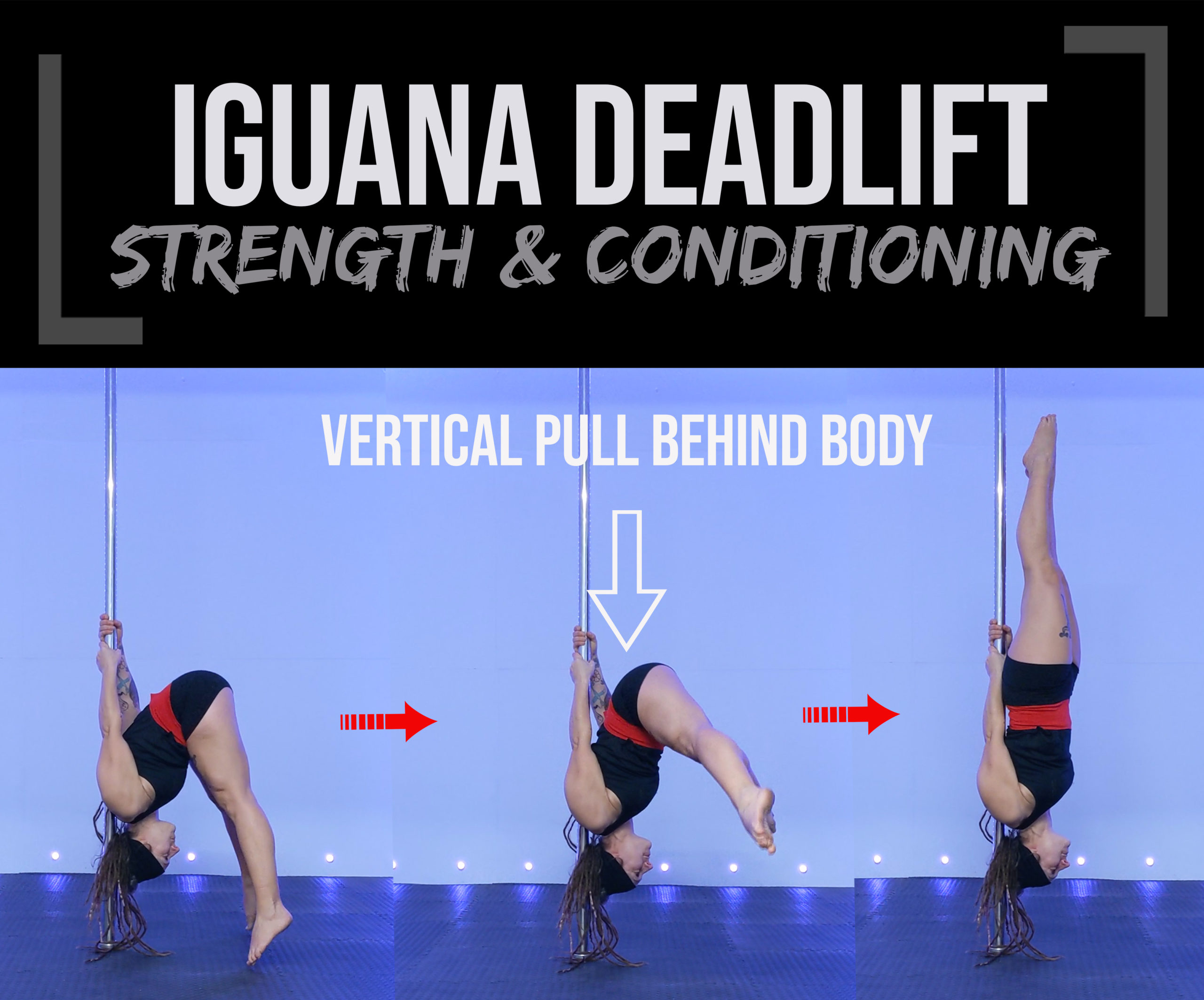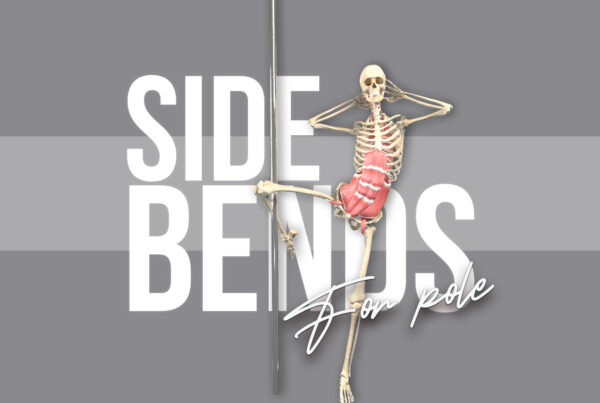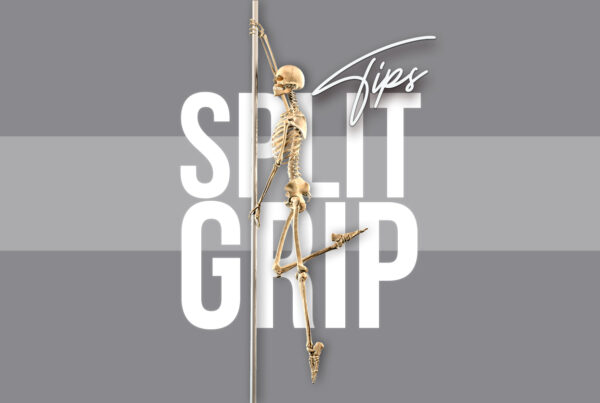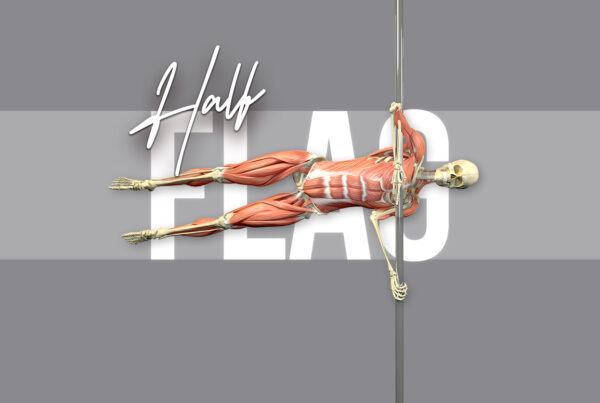Since I started writing this Iguana series, the world has been turned on its head. Gyms and pole studios around the world are closing their doors and many of us are facing a pole-less existence for the foreseeable.
As we head towards unchartered territory, like many of you, I’m finding it difficult to focus. So I’m taking a deep breath and drawing my attention back to the things I CAN control. They are the same thingsthat keep me grounded even in non-pandemic times: coaching, training and writing.
On this blog and on my social media pages, you will see me continuing to write about my passion – strength and conditioning for pole. It helps me to keep sense of normality amid all of this chaos – and I hope it gives you an opportunity to escape, too – so we can binge read pole, instead of the news, even if only for a moment!
Right now, we must distance ourselves from each other physically, but pole will always bind us together.
On this note, please continue to support your local studio if they are taking classes online. This may feel a little less personal than you are used to, but as an experienced online coach, I can tell you that community spirit can flourish and great and close friendships can be formed, even from a distance. I’m closer to some of my online clients than I am to some of my ‘real life’ friends and family! So please embrace this brave new world of online training with open arms and keep the dialogue with your instructors and pole fam alive – they are feeling just as scared and overwhelmed as you, believe me!
So… who wants to chat a little bit more about the Iguana? Me too! I’m glad you asked!
Iguana vs Invert – opposites attract!
In my last iguana post, we talked a lot about shoulders. Today, I want to break down the rest of the iguana deadlift movement and the strength aspects of it.
One of the reasons I love me an Iguana deadlift is because it works IN REVERSE the movement we repeat day-in and day-out on the pole – the invert! Yey muscle balance!
In our invert, we begin pulling vertically from above and lift our legs up into hip flexion. In our Iguana deadlift, we begin pulling vertically from below and we lift our legs from a flexed position into extension.
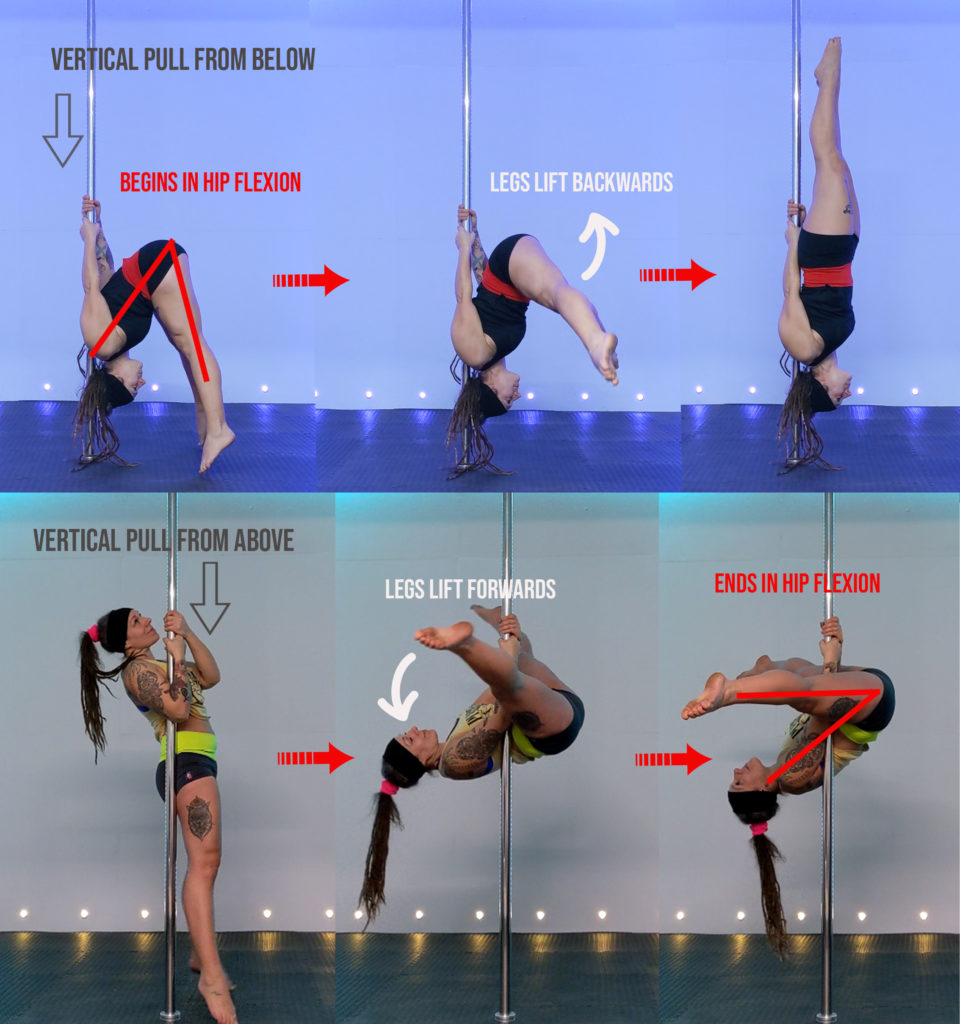
Pretty cool, huh? In my book, I talk about the importance of muscle balancing and its impact on injury reduction and posture. That balance isn’t just about training both sides, but also working opposing muscle groups, too.
One way to help balance this, erm, balancing act is to make sure that we have a good variety in the pole moves we are training, so we are not repeating the same movement pattern over and over, which can lead to overuse of the same muscle groups.
A little analysis of our favourite moves like the one above can help when we are planning our training to ensure that we are incorporating a good mix of different muscle groups, working in different directions and planes of movement.
Strength and conditioning for the iguana deadlift
If your shoulder extension mobility is restricted, please refer back to my last blog post which covers in more detail the importance of shoulder extension when it comes to the Iguana deadlift.
All good in that department? Awesome! Then let’s look at some of my favourite conditioning drills for the Iguana deadlift.
The hip flexion part
Below you will find one of my favourite exercises EVER! It features widely in my programmes but here we are using it specifically to strengthen the start position of the Iguana deadlift. To get our legs off the floor and hold that initial hover position, we need good active hip flexion, which is exactly what this exercise works; hip flexor strength and also quad strength to keep the legs straight. Aim for 5 on each side for 3 sets.
The leg lifting part
Bringing the legs behind us from a position of flexion to extension requires a lot of strength from our hamstrings and glutes. ALL THE HIP BRIDGES is my advice for this element! Begin by learning and understanding the hip bridge movement and making sure you are engaging your glutes! It’s all about the booty, people!
From there, you can progress to weighted variations:
And eventually you can add more instability and make it a little more pole-specific by using a suspension trainer or stability ball, like this:
The upper body part
For the upper body aspects of this move, of course, we need to be strong in extension, but we also need lots of shoulder awareness and stability, generally. If you are not already doing scapula awareness drills and rotator cuff strengthening as part of your training routine, adding some basics here will really help you now – and in the long run!
As for the extension specifically, the drill below is taken from my previous post:
You can progress this to more pole-specific movements like the planche prep exercise below. This will help to prepare your shoulders for the demands of the Iguana, without putting your whole bodyweight into it just yet.
Remember: start with low volume and low intensity and build up gradually! It’s the surest, safest way towards progression!
My two favourite ‘on the pole’ Iguana drills
When you are ready to take your Iguana training to the next level, here are my two favourite exercises…
1. Iguana deadlift negatives
Lowering out of this move is much easier than lifting into it, so if you are able to get into the Iguana position and lower slowly out of it, you will train the same muscles that need to be strong for the lift, so it’s a super useful and effective exercise. Just make sure you go as slow as you can!
To come into your Iguana position, you can either come up from the floor with tucked legs or you can lower into it from a layback like I am doing in the video above.
Note: If you opt for the layback entry, it is best to start lower on the pole than I am in this video, so that when you bring the legs down, you are not too far away from the floor!
2. Iguana deadlift from blocks
If you feel strong in your Iguana but can’t yet lift your feet from the floor, raising your feet by standing on blocks or a crash mat is a really awesome way of making this move easier.
Find a height where you can only just lift the feet – this might be as low as a couple of yoga blocks, or it might be as high as a bench or stack of crash mats! Every week or two, see if you can lower the height of the platform – if you do this gradually over time, eventually you will be able to do it from the floor. Magic!
If you asked me an Iguana question and I didn’t answer it here – stay tuned! I’m not done with the Iguana Anatomy nerd-fest just yet!
If you want to know more about how to programme your training for pole, check out my book – the ultimate pole dance text book! Strength and Conditioning for Pole – 460 pages of pole geeking awaits! Available now in hardcopy or pdf download!


